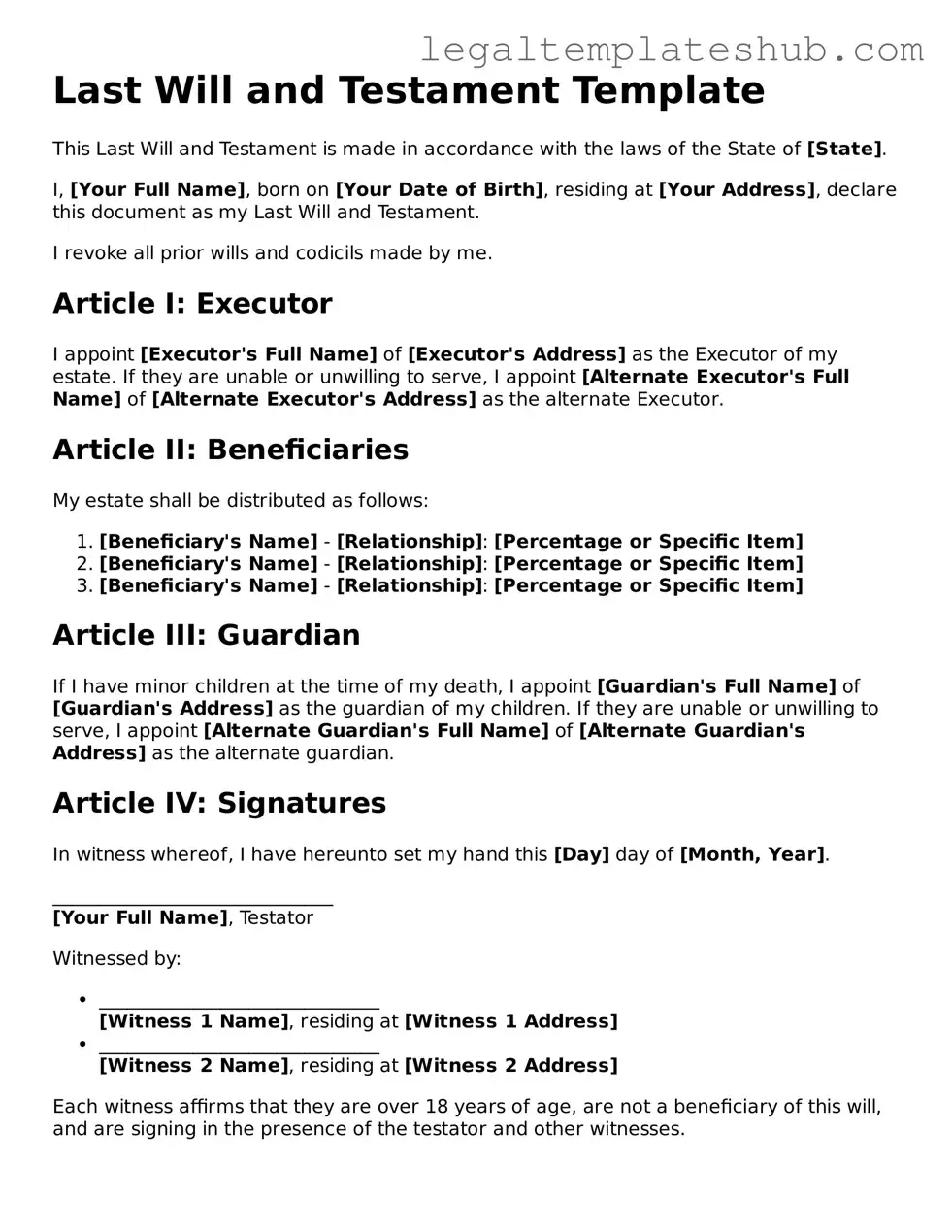Printable Last Will and Testament Template
A Last Will and Testament is a legal document that outlines how a person's assets and affairs should be handled after their death. This important form allows individuals to express their wishes regarding the distribution of their property, the care of dependents, and the appointment of executors. Understanding and completing this form is a crucial step in ensuring that your legacy is honored according to your desires; start the process by filling out the form below.
Access Editor
